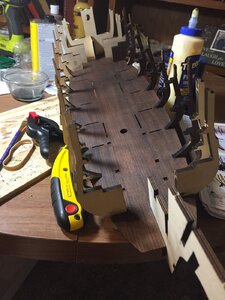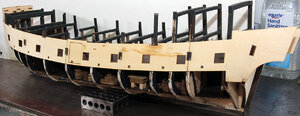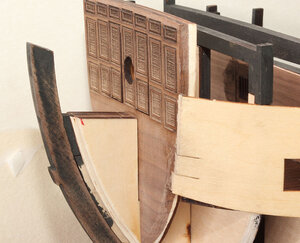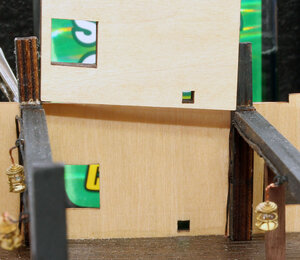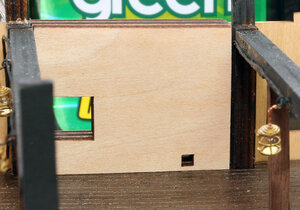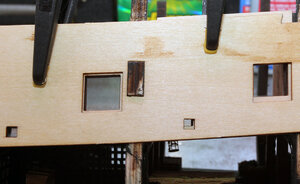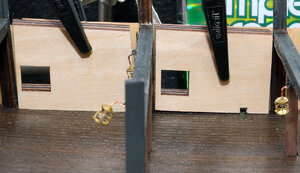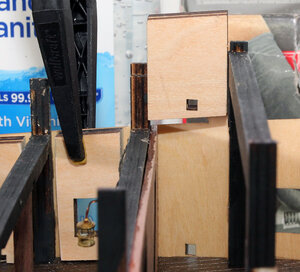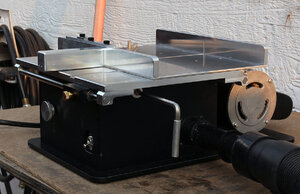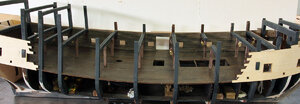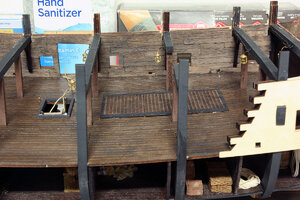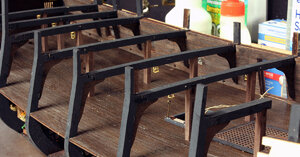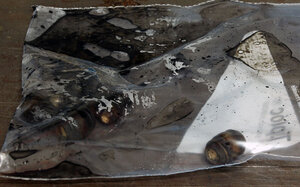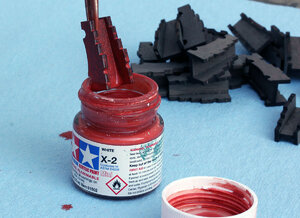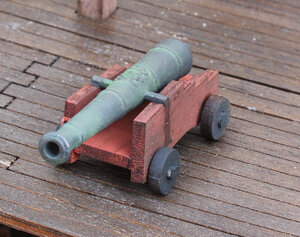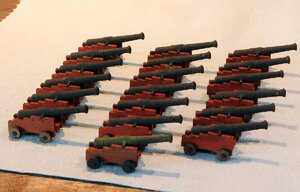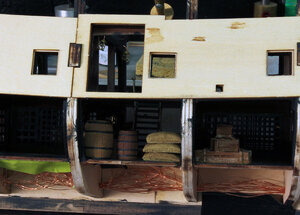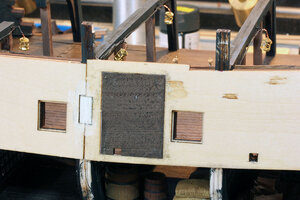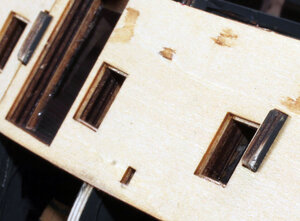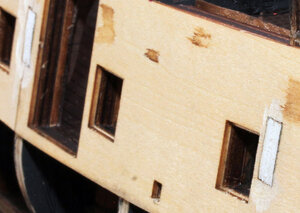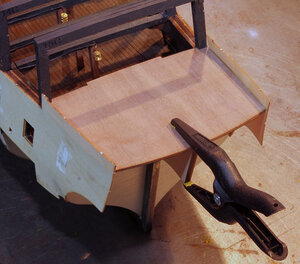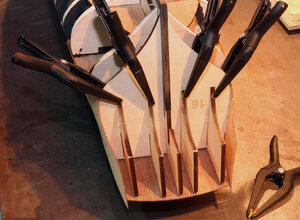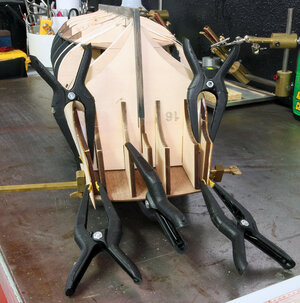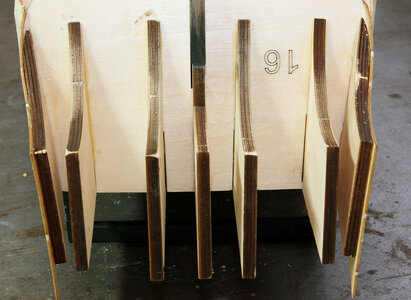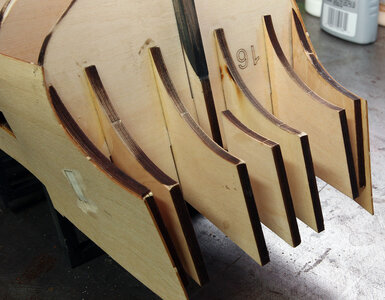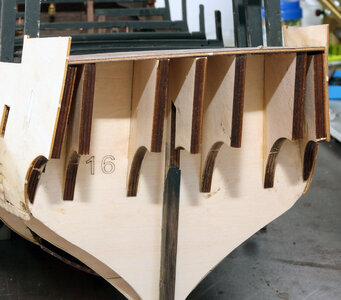Next up I glued the front pieces in place and then went to work cleaning and painting the upper beams for the second deck. On the next Saturday I spent most of the day soldering up more lanterns and installing them. I previously showed the lantern construction so I didn’t document that again. Here’s the ship with the beams, pillars and lights in place.
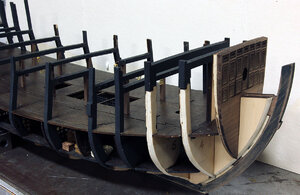
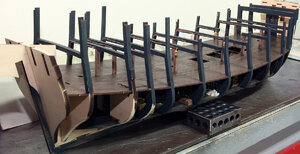
I had to chuckle after I got this done I noticed a note, that I interpreted to mean "you could sand the pillars to make them round which would look better." I thought to myself that this could be a neat idea, but if you were going to make the pillars round it would be good to think about that before doing the lower deck. Not to mention doing that after installing the pillars like I have would absolutely result in breaking a lot of parts.. Well maybe next time if I build the inside of a ship again. It would look nice IMO to turn the center of the pillars so they are round just as an added detail.
So my next decision was to glue the top of the rear frames on. The instructions tell you to do this, but it might be better to leave them off for a bit. It’s a tough call IMO because they do reinforce the top of the frame for when you flip it over.
Edit; After moving forward in the build I highly recommend gluing the aft of the three cross beams in place. The forward 2 might still end up being in the way, but the aft one makes it so you can flip the ship over and work on the bottom without breaking anything. It's interesting the manual tells you to glue these on in step 105 but you never see them in another photo till you get to step 189.
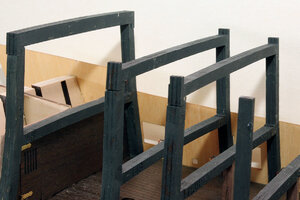


I had to chuckle after I got this done I noticed a note, that I interpreted to mean "you could sand the pillars to make them round which would look better." I thought to myself that this could be a neat idea, but if you were going to make the pillars round it would be good to think about that before doing the lower deck. Not to mention doing that after installing the pillars like I have would absolutely result in breaking a lot of parts.. Well maybe next time if I build the inside of a ship again. It would look nice IMO to turn the center of the pillars so they are round just as an added detail.
So my next decision was to glue the top of the rear frames on. The instructions tell you to do this, but it might be better to leave them off for a bit. It’s a tough call IMO because they do reinforce the top of the frame for when you flip it over.
Edit; After moving forward in the build I highly recommend gluing the aft of the three cross beams in place. The forward 2 might still end up being in the way, but the aft one makes it so you can flip the ship over and work on the bottom without breaking anything. It's interesting the manual tells you to glue these on in step 105 but you never see them in another photo till you get to step 189.





